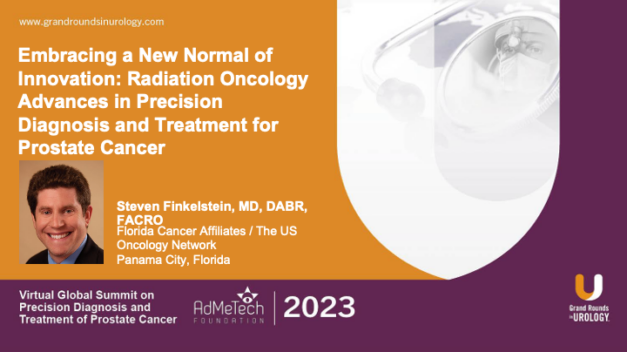Embracing a New Normal of Innovation: Radiation Oncology Advances in Precision Diagnosis and Treatment for Prostate Cancer
Steven E. Finkelstein, MD, FACRO, examines the advances in radiation oncology that are reshaping precision diagnosis and treatment for prostate cancer. He highlights how recent technological developments have enhanced both the accuracy and effectiveness of radiation therapy.
Dr. Finkelstein discusses cutting-edge imaging techniques such as multiparametric MRI and PET/CT scans, which enable clinicians to precisely delineate tumor boundaries and identify regions of aggressive disease. He also explores advancements in radiation delivery techniques, including intensity-modulated radiation therapy (IMRT) and stereotactic body radiation therapy (SBRT).
The presentation addresses the role of artificial intelligence (AI) and machine learning in revolutionizing radiation oncology. AI algorithms are being developed to assist in treatment planning, predict patient responses, and adapt therapies based on tumor changes. These technologies promise to streamline workflows, reduce planning times, and enhance the precision of radiation delivery.
Read More

